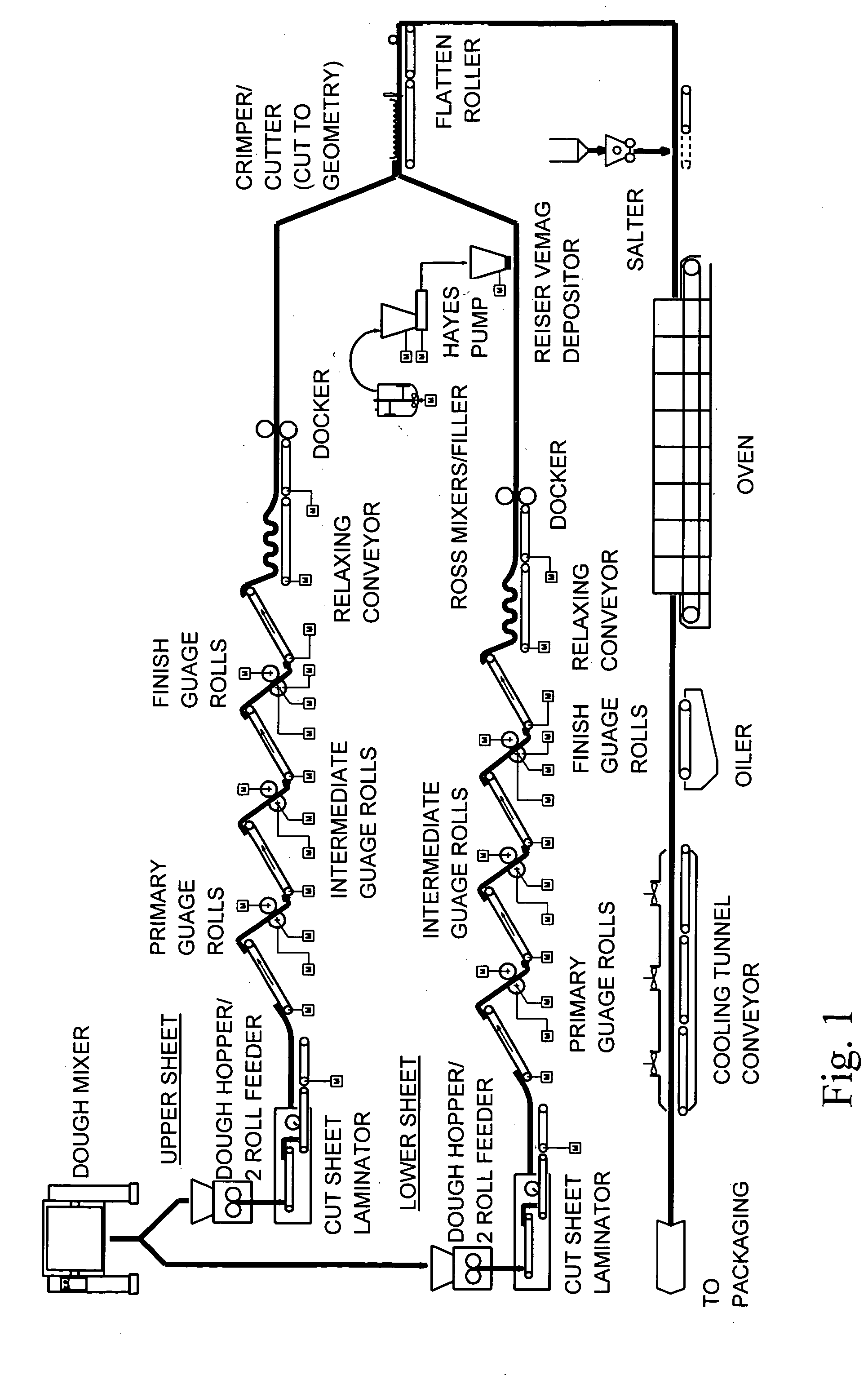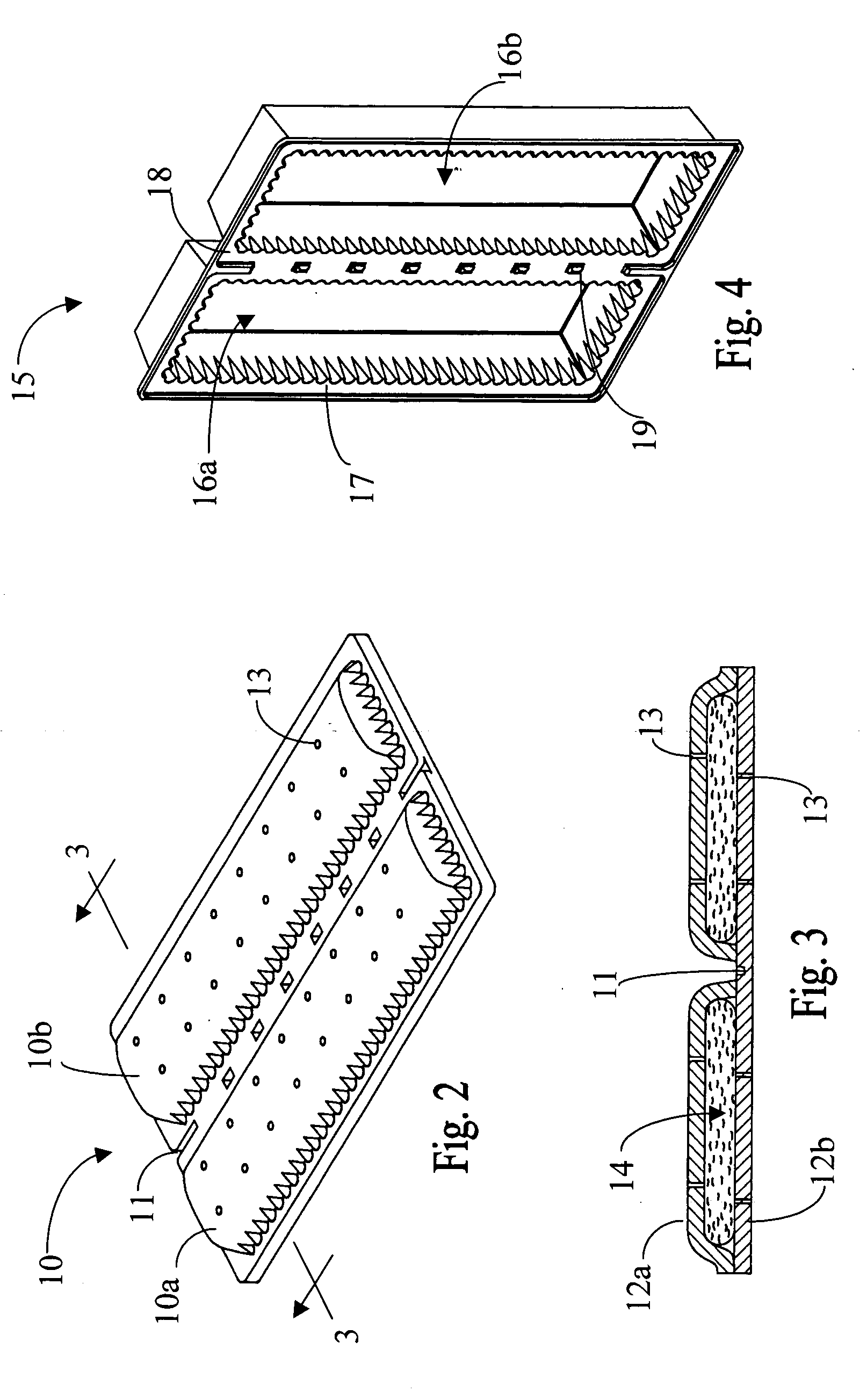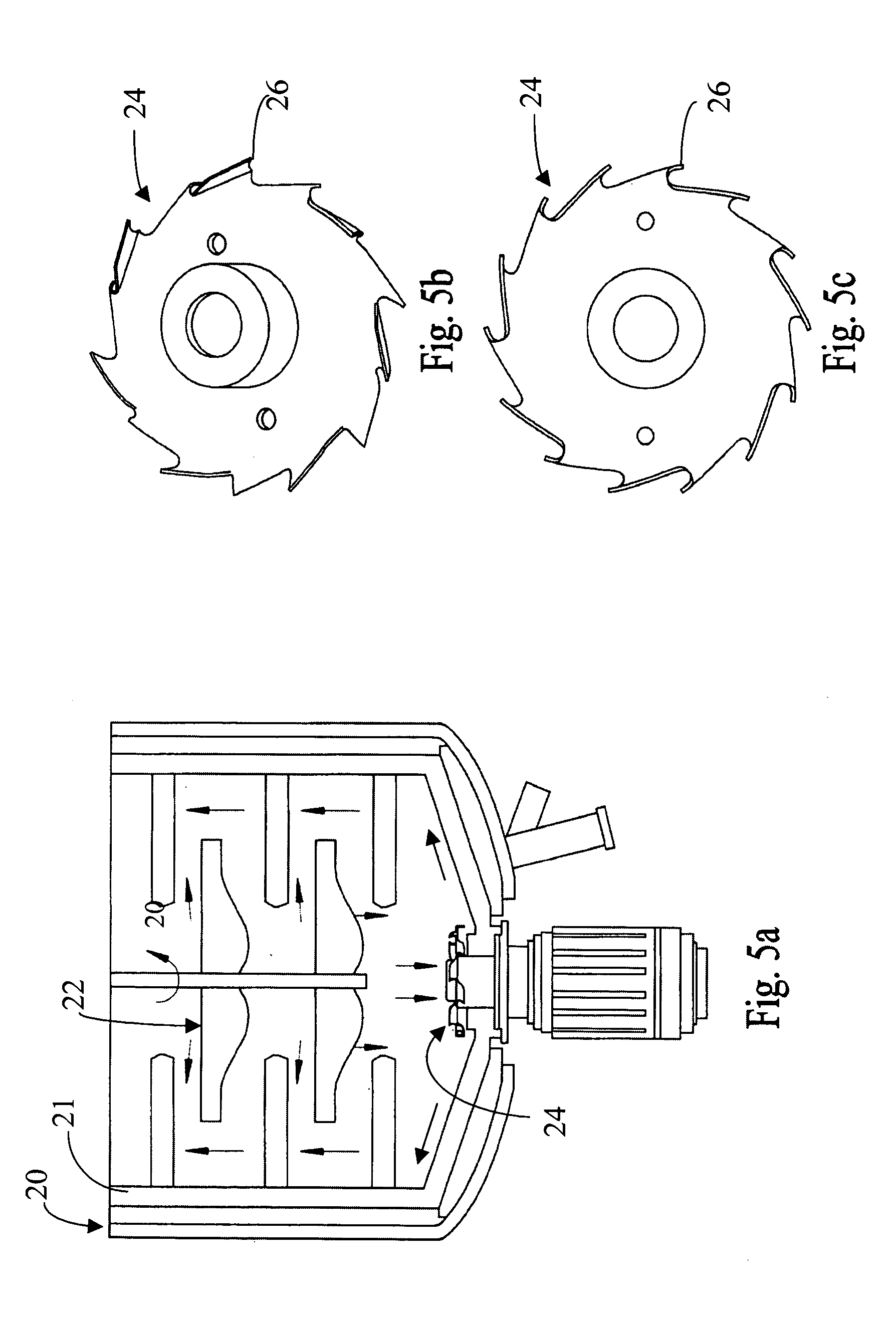Process for preparing filled cracker products
a technology for filling crackers and crackers, which is applied in the field of snack products, can solve the problems of further difficulties for engineers trying to make filling cracker products, the inability to provide the desired control of product portion weight, and the expense of giving away a certain amoun
- Summary
- Abstract
- Description
- Claims
- Application Information
AI Technical Summary
Benefits of technology
Problems solved by technology
Method used
Image
Examples
Embodiment Construction
[0030] This invention provides processing for creating filled cracker snack products containing savory / salty / sweet, low moisture and low Aw (e.g., RH<35%) bake stable fillers from mixing unit operations through cracker stick formation using processing and equipment systems that have been enableded and integrated specifically for this process. The formulations and processing techniques of the aforementioned U.S. Patent Applications and Publications, namely in United States Patent Publication Numbers 20020197354 and 20020155198, as well as U.S. patent application Ser. No. 10 / 616,726 , filed Jul. 10, 2003, are hereby incorporated by reference in their entireties. While not limiting, representative of these formulations are those comprising from 5 to 55% of a fat phase and 20 to 50% of an aqueous phase. They will also desirably comprise at least 3% of dispersed solids. Reference is made to the above for specifics of formulations having various flavors. The invention makes the production...
PUM
 Login to View More
Login to View More Abstract
Description
Claims
Application Information
 Login to View More
Login to View More - R&D
- Intellectual Property
- Life Sciences
- Materials
- Tech Scout
- Unparalleled Data Quality
- Higher Quality Content
- 60% Fewer Hallucinations
Browse by: Latest US Patents, China's latest patents, Technical Efficacy Thesaurus, Application Domain, Technology Topic, Popular Technical Reports.
© 2025 PatSnap. All rights reserved.Legal|Privacy policy|Modern Slavery Act Transparency Statement|Sitemap|About US| Contact US: help@patsnap.com



